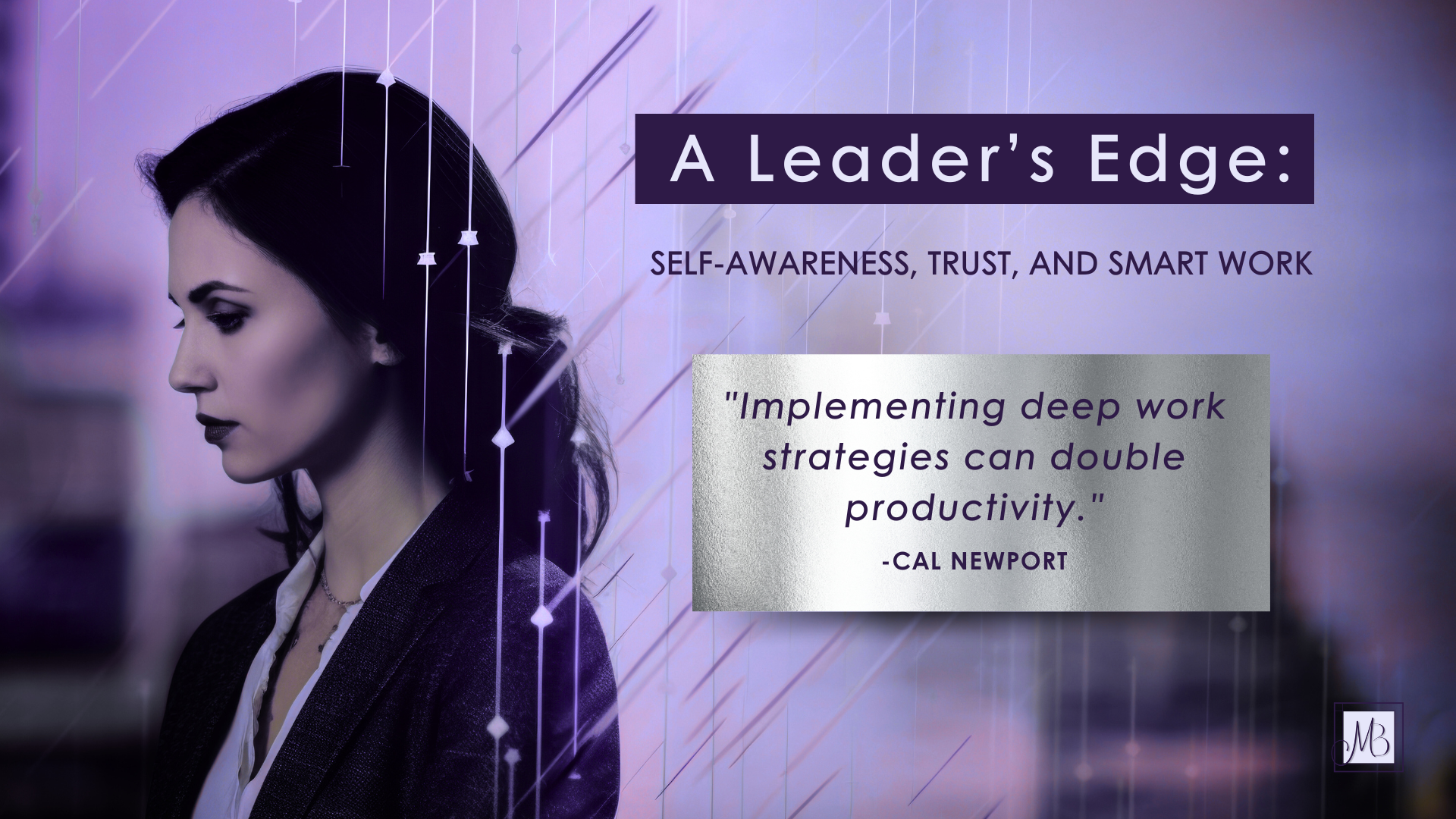I was in a Networking Meeting Recently, and the conversation took an interesting turn. We were discussing how corporations are investing heavily in large office spaces again—yet top producers aren’t interested in returning. It seems that top performers reject the office, as the days of CPAs and financial advisors’ “hoteling” at client sites gave way to the pandemic-era norm of “hoteling from home.” Now, many organizations are attempting to mandate a hybrid model that, in practice, feels more like “hoteling at the office” — no assigned space, just an expectation to be present. The problem? Employees aren’t buying it.
Top talent—especially those who drive revenue—don’t see the point of commuting to take virtual meetings from a different location. Leadership, on the other hand, is grappling with engagement, collaboration, and morale. The gap between flexibility and organizational cohesion is widening, and companies are left pondering how to motivate teams, build culture, and ensure productivity in a world where the traditional office isn’t the default hub of work. These challenges are not to be underestimated, and it’s crucial for leaders to feel understood in their efforts to adapt.
The Changing Workplace Expectations
Workplace expectations have changed dramatically over the last few years. A Gallup study found that 71% of employees with remote-capable jobs prefer a hybrid or fully remote model. Yet, leadership continues to push for a return to in-office work, citing concerns about culture, collaboration, and productivity. There is merit to these concerns—mentorship happens naturally in an office environment, junior employees learn by osmosis, and impromptu conversations can spark valuable ideas. However, forcing employees into a workspace for the sake of presence alone risks alienating the very people companies want to retain.
The shift has been particularly stark in the professional services industries like legal, finance, and accounting, where the traditional “book of business” model relied on in-person networking and client meetings. Leaders in these spaces now face the challenge of fostering connection and collaboration while honoring employees’ desire for autonomy. The struggle is apparent: Offices that once buzzed with activity now feel underutilized, while virtual workdays sometimes lack the energy and engagement many leaders crave.
Reimagining the Hybrid Office
Companies attempting to strike a balance are experimenting with different approaches. Some are restructuring their office environments, shifting away from rows of desks and toward spaces designed for collaborative work. Instead of mandating an arbitrary number of in-office days, a few firms have started implementing structured in-person events, where employees come together with intention—whether for strategic meetings, client workshops, or networking opportunities. These initiatives recognize that the value of the office is not in the physical space itself but in the interactions it fosters.
One firm, for example, found success by designating specific office days for mentorship and learning, creating an environment where senior employees could guide and develop newer team members. Others have reimagined their office layouts, creating social spaces and tech-enhanced collaboration hubs rather than forcing employees into outdated cubicles. When designed thoughtfully, hybrid work environments can become an asset rather than a liability, offering a new way to foster connection and productivity.
Bridging the Gap Between Flexibility and Engagement
Technology also plays a role in bridging the divide. Firms leveraging AI-driven scheduling tools and digital mentorship programs are seeing improvements in engagement, as these tools help structure interactions that might otherwise fall by the wayside. Virtual coffee chats and innovative networking initiatives can recreate some of the serendipity of in-person work without requiring full-scale return-to-office mandates. However, technology alone isn’t the answer—it must be combined with leadership that actively fosters connection and ensures employees feel supported in virtual and physical workspaces. Leaders play a crucial role in setting the tone for the work environment, whether virtual or physical. They must actively foster a culture of trust, open communication, and support, which can significantly impact employee engagement and productivity.
Some organizations have already seen the benefits of a flexible but structured hybrid approach. Companies that have abandoned rigid office mandates in favor of intentional in-person engagement report higher retention rates, increased productivity, and stronger workplace satisfaction. A recent PwC study found that firms offering hybrid flexibility experienced 35% lower attrition rates than those enforcing full-time office returns. Meanwhile, research from Stanford suggests that when employees feel in control of their work environment, their productivity increases by 23%. These numbers reinforce what many employees have been saying: flexibility leads to better outcomes, not worse. This success is a testament to the potential of a well-managed hybrid model, offering leaders a hopeful vision for the future.
Managing the Hybrid Workforce
Creating an Inclusive and Connected Hybrid Workplace
As mentioned earlier, technology is a key tool in bridging the gap in a hybrid work environment. However, it’s the role of leadership that truly sets the tone for the work environment, whether virtual or in-office. To effectively manage a hybrid workforce, leadership must be intentional about communication, accountability, and engagement.
One of the biggest challenges in a hybrid setting is ensuring that remote employees feel as connected and valued as office employees. Leaders must prioritize equal access to opportunities by ensuring that key projects and mentorship are not biased toward in-office workers. Regular check-ins, structured team meetings, and clearly defined expectations help eliminate the risk of remote employees feeling overlooked.
A successful hybrid model also requires clarity in performance expectations. Companies can focus on outcomes and deliverables instead of measuring productivity based on hours worked or physical presence, again, focusing on working smarter, not harder (see prior blog). Leadership should set clear goals and communicate openly about what success looks like, reinforcing trust and accountability across teams.
Balancing Flexibility with Structure for Maximum Productivity
Creating structured in-person interactions can also strengthen team cohesion. Instead of mandating arbitrary office attendance, leaders should schedule purposeful office gatherings for collaboration, brainstorming sessions, or professional development opportunities. These moments should add tangible value rather than feel like forced compliance.
Another crucial factor in a successful hybrid model is fostering a culture of open communication and inclusion. Encouraging asynchronous work, using collaboration tools effectively, and ensuring leadership is accessible to both remote and in-office employees all contribute to a more dynamic, unified team. Managers must also be vigilant in recognizing and addressing potential burnout, as hybrid workers often struggle to set boundaries between work and personal life.
Leaders who embrace flexibility while maintaining structure and accountability build trust and ultimately create an environment where employees feel supported, engaged, and motivated to perform at their best. This reassurance is a reminder that with the right strategies and mindset, it’s possible to create a work environment that is both supportive and engaging, inspiring leaders to take on the challenge of managing a hybrid workforce.
Key Takeaways for Leaders
- Hybrid success depends on structured in-person engagement. Leadership should focus on making office days meaningful, prioritizing collaboration and development.
- Culture thrives when leadership is intentional. Employees need clarity on connecting, contributing, and growing within a hybrid model. Leaders must provide this clarity and foster a culture of intentionality.
- Technology should enhance, not replace, human connection. Tools and scheduling software can support hybrid teams but cannot substitute in-person mentorship and relationship-building.
The Future of Work Requires Self-Aware Leadership
The challenge isn’t whether employees should return to the office; it’s how leaders can create an environment that fosters engagement, collaboration, and personal growth in a hybrid setting. Self-awareness and emotional intelligence are at the heart of this shift. Leaders who understand their biases, listen actively to their teams, and make decisions based on long-term impact rather than short-term control will build workplaces where people genuinely want to contribute.
Hybrid work isn’t just about balancing structure and autonomy. It’s about cultivating trust. Employees thrive when they feel valued, heard, and supported. That starts with leaders who prioritize clear communication, demonstrate empathy, and create intentional physical and virtual spaces where innovation and connection can flourish. Organizations that recognize this shift will attract and retain top talent and drive better business results, proving that leadership rooted in self-awareness and EQ is the true differentiator in today’s workforce.
The challenge isn’t whether employees should return to the office but how to make hybrid work more effectively than fully remote or fully in-office setups. Leadership must take an intentional approach, designing workplaces that enhance engagement, connection, and productivity. Office mandates without purpose are doomed to fail. Still, a well-thought-out hybrid strategy that balances structure with autonomy can lead to stronger teams, better retention, and a culture that top performers want to be part of.
The future of work isn’t about where employees sit but about how companies create environments that enable their people to thrive. Organizations that recognize this will attract and retain top talent and produce better business results in the long run.










